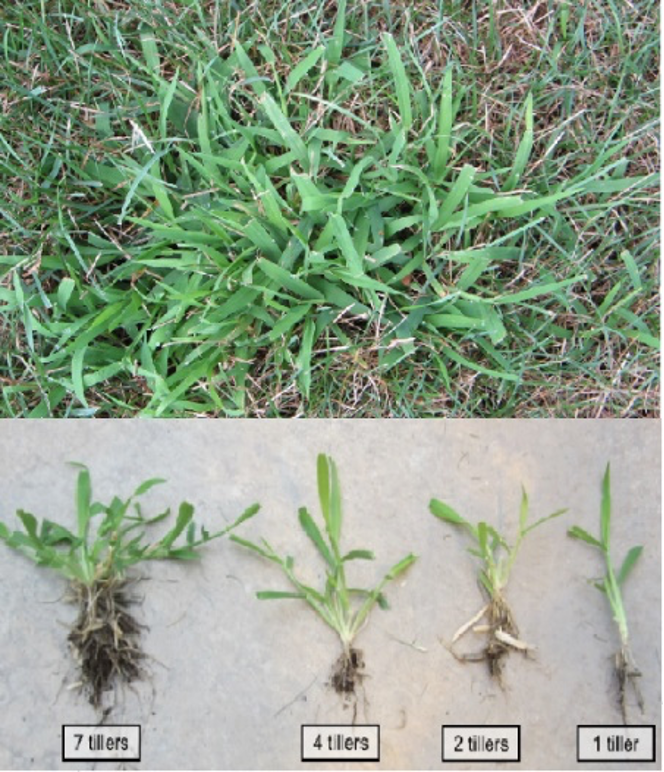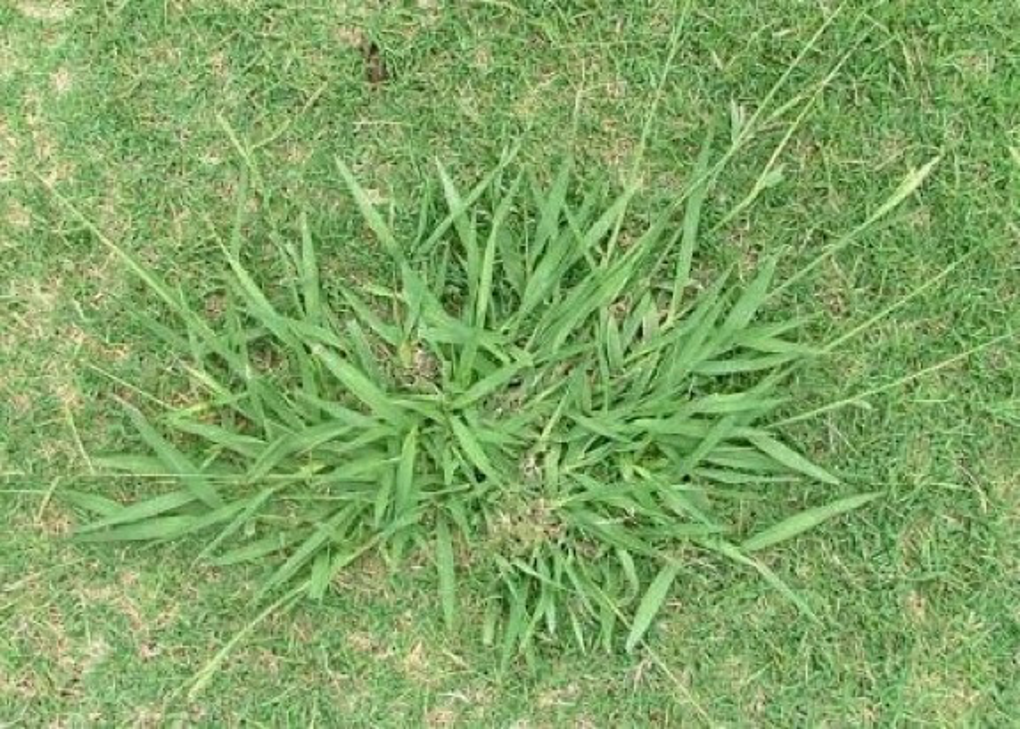Crabgrass and Paspalum are invasive weeds that are usually misidentified due to the timing of their growth and appearance. They both appear on your lawn once soil temperatures are ideal for germination/growth to start. As warm season grasses, they need heat and humidity to thrive.
Identification
Crabgrass is an annual grass. This means it will start as a seed and end as a seed in a single season/growing year. When soil temperatures reach 60 degrees, the seeds will germinate. Typically, crabgrass will be found along walkways, driveways, and patios due to the soil temperatures being higher in those areas. The leaf blade of crabgrass has no indentations near the tips of the blade.


Paspalum is a perennial grass. Like bulbs planted in your beds, this grass will come back year after year in the same location. It does not spread as quickly as crabgrass due to the growth habit. Paspalum does produce seed during its growth cycle, but the spread is more laterally underground from the original bulb structure. Once paspalum has produced leaf structures, there is an indentation about an inch from the end of the blade. Digging the plant up will show a bulb like structure unlike the fibrous roots of a crabgrass plant.

Solutions for Eradication
Crabgrass can only grow by seed germination. Using a preemergent product at the correct time of year will reduce the number of germinating plants. Each year that you do not treat this weed, hundreds of thousands of seeds can be waiting to emerge. Therefore, one year of preemergent is not a silver bullet. If you have had an abundance of crabgrass over many years, it will take many years to diminish the population of crabgrass. Each seedling that germinates removes preemergent, so break through is common. Post emergent products will help reduce the break though if it is done before fall seed production. Paying special attention to areas where crabgrass thrives is essential to the eradication. These areas are prone to disruption by weed whackers, which breaks down preemergent mechanically. After several years of treatment, crabgrass should only be visible in areas around walkways, driveways, and patios, not in the lawn.
Paspalum does not have to start as a seed because it is a perennial weed. The bulb structure overwinters and will grow once the soil temperatures are ideal. Paspalum does produce seed but a preemergent will control the seeds that are produced. Preemergent will not affect the bulb structure. Therefore, paspalum grows laterally in clumps and does not spread as rapidly as crabgrass does. Proper identification of this weed will help in treating it. Round up and Pylex are the only products that will get rid of paspalum. Timing of the application should be prior to seed production. Chances are if you have had consistent applications of preemergent but still have “crabgrass” in the middle of your lawn, it is Paspalum.















